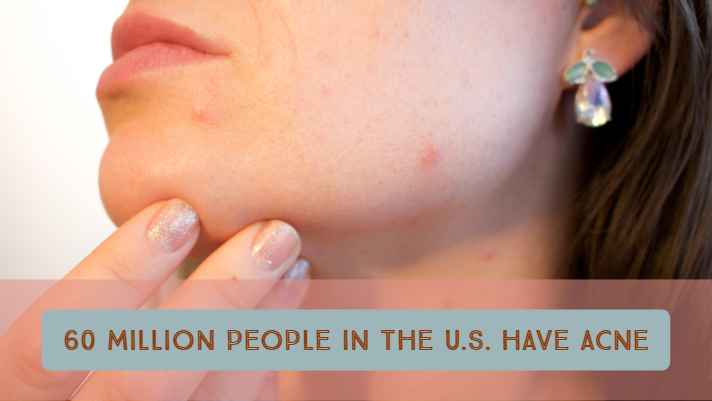
You’re Not Alone In Your Adult Acne: Quick Facts And Treatment
Acne is most commonly associated with teenagers and is often expected to completely disappear with age. This couldn’t be more untrue as many adults get acne well into their 30s, 40s, and even 50s. There are two common categories of adult acne. The first is persistent acne, which is acne that has followed you from adolescence into adulthood. The second is late-onset acne, which is acne that appears for the first time in adulthood. Both can be extremely frustrating to deal with, but the first steps are understanding why its occurring and what types of acne treatment you can pursue.
Why Am I Having Breakouts As An Adult?
There is no fool-proof answer to why some people get adult acne and some don’t, but the field of dermatology has narrowed down a few reasons.
- Changing hormone levels. Many people assume that the end of adolescence is also supposed to bring an end to hormone fluctuations. In reality, hormones in both men and women fluctuate throughout our lifetimes, although women tend to see and feel the tangible results with their menstrual cycle. This also means women are likely to get adult acne more often than men. They may see breakouts and need acne treatments around their periods, during pregnancy and menopause, and after starting or ending birth control pills.
- Genetics. If a close blood relative such as a parent, brother, or sister has adult acne, you have a higher chance of having it too. Studies have found that people may have a predisposition for acne written in their genes, setting them up for an adulthood that regularly sees acne.
- Hair and skin care products. When you use products, and especially if you use a lot of them, you are at a higher risk for adult acne. You want the labels on your various bottles and jars to say “non-acnegenic”, “oil-free”, or “non-comedogenic” for clearer skin.
- Medically related. In some cases, acne is a sign of an undiagnosed medical condition. Once that condition is treated, the acne often clears. In other cases, acne is a side effect of a medication you’re taking. If that is the case, ask your doctor about an alternative medication or see a dermatologist for acne treatment if there are no effective alternatives.
How Can I Treat Adult Acne?
The most direct way to treat adult acne is to contact a dermatology center and set up an appointment with them. If you prefer to go a non-medical route, there are at-home acne treatment options you can try.
- Green Tea. Typically thought of as a warm beverage, green tea helps fight acne with its antimicrobial and antioxidant compounds. Use a cooled cup of green tea as a face wash or lay the bag over the affected area.
- Mint. Clear acne before it begins by mixing two tablespoons of finely chopped fresh mint with two tablespoons each of plain yogurt and pulverized oatmeal. This concoction will remove pore-clogging oil after you leave it on your face for 10 minutes and rinse it off.
- Tea Tree Oil and Witch Hazel. By pouring it on a cotton ball and wiping your face each morning and night, witch hazel on its own can dry and shrink blemishes. Mixing 20 to 40 drops of witch hazel with a few drops of tea tree oil and applying up to twice a day can fight inflammation.
- Apple Cider Vinegar Containing malic and lactic acids, apple cider vinegar can exfoliate, reduce red marks, and treat acne. It works as a toner when mixed with an equal amount of water, shaken well, and applied with a cotton ball.
About 96% of people with acne have reported feeling depressed because of it. Adult acne is not something that you have to suffer from every day. Look into treatments that suit your lifestyle and get clearer skin today.








No Comments
Sorry, the comment form is closed at this time.